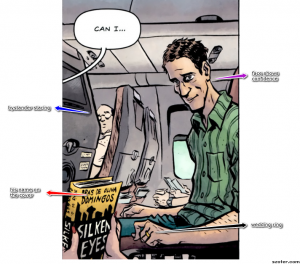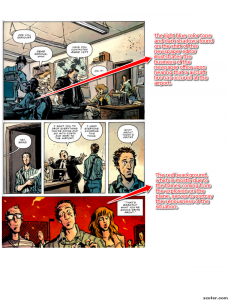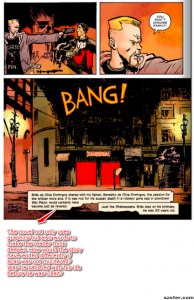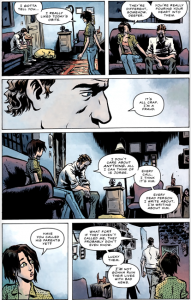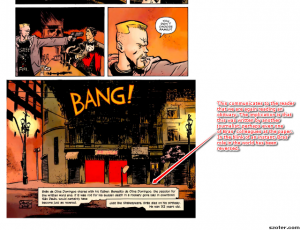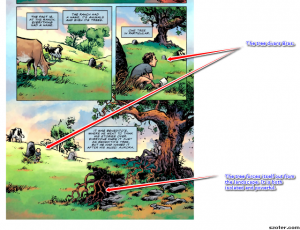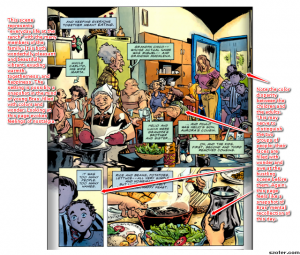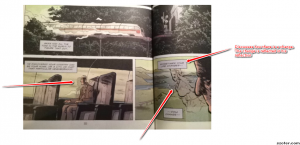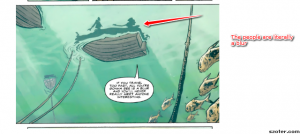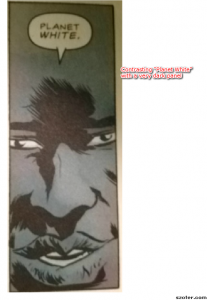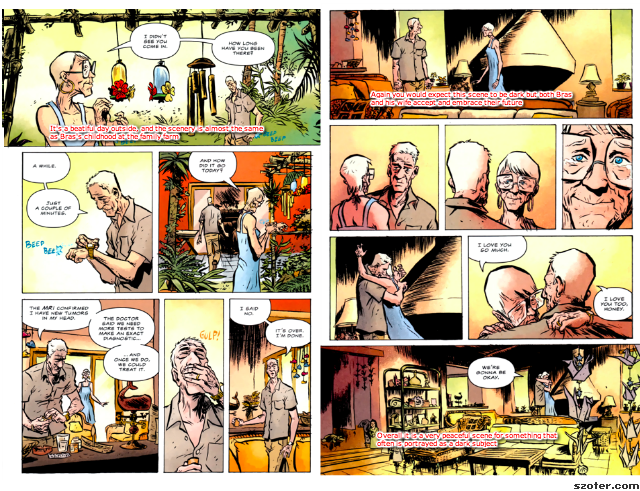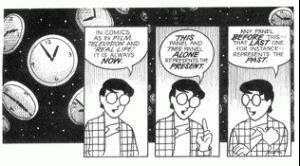“Daytripper” is the first graphic novel I have read, so it acted as an introduction to the medium for me. My first impression was that the addition of images to the more traditional novel gave the authors a powerful literary tool to work with, and I enjoyed the ways that Ba and Moon made use of it. It particular, I thought that they did a fantastic job of describing the setting and background for each chapter using almost only pictures.
In the beginning of the second chapter, for example, it is important that Ba and Moon are able to clearly define the new setting and mood of the coming pages, since they are each vastly different from the first chapter. Bras and Jorge are now at a completely different point in their lives, traveling through South America with no responsibilities left behind. The title page for the chapter is able to express this in a single image by showing their age through their appearance, mood through their body language, and location through beautiful landscape.
In the third chapter they change the setting all over again, jumping almost a decade into the future and shifting to a darker mood that is expressed by the general theme of black and blue in the opening image below.
Their opening pictures in the fourth chapter so aptly describe the situation that no words are necessary until several panels in. The iconic scene of a nervous husband stumbling through a well-rehearsed trip, reinforced by his wife’s bulging stomach in a following panel, allows us to immediately recognize the approaching birth.
Lastly, in the seventh chapter, Bras’ newfound career success is clear before it is ever stated. His name on the book cover and his confident look of one accustomed to this kind of attention give it all away.
Throughout the graphic novel the utility of images allows Ba and Moon to avoid almost all explicit exposition and speech. It allows them to focus on the quiet moments.





